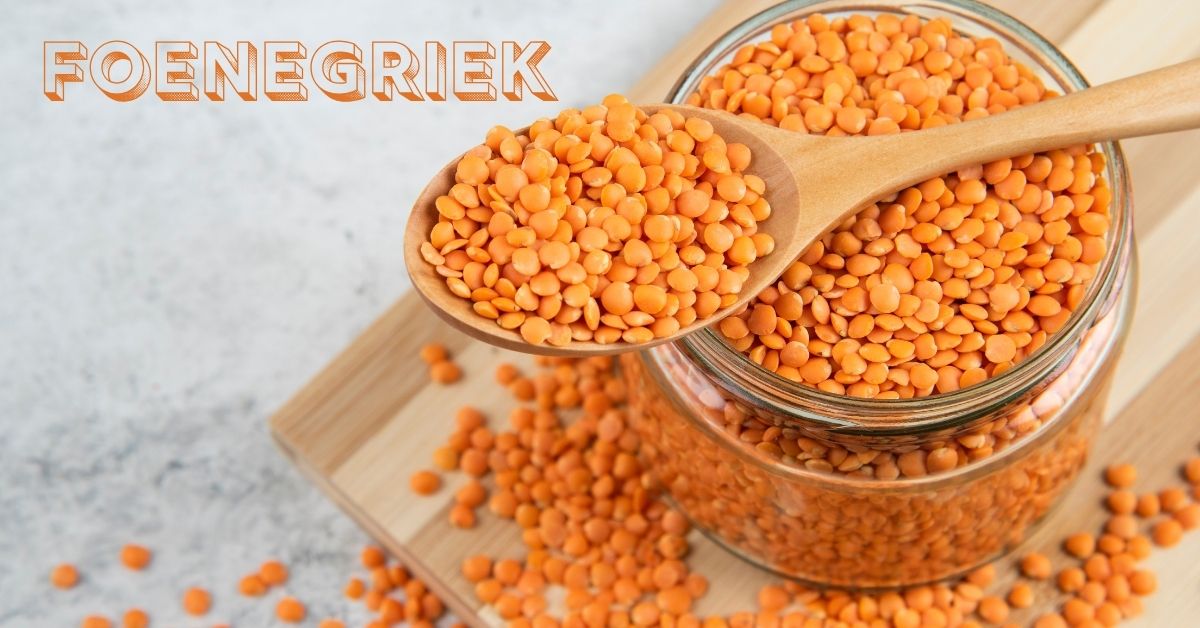That distinct, maple-syrup-like aroma wafting from a kitchen or the subtle, bitter note in a complex curry often points to a single, ancient ingredient. Foenegriek, a staple in many global pantries, is far more than just a culinary additive. This small, amber-colored seed, derived from the fenugreek plant, carries a legacy of traditional medicine and culinary artistry that spans continents and centuries. Its unique flavor profile, sitting at the intersection of sweet, bitter, and nutty, makes it incredibly versatile. But beyond its capacity to elevate a dish, foenegriek holds a treasure trove of potential health benefits that modern science is only beginning to fully validate. From supporting metabolic health to offering comfort in age old remedies, this humble seed is a powerful ally. Unpacking its story reveals why it has remained a cherished component of both the kitchen and the apothecary’s cabinet for generations.
What Exactly is Foenegriek?
Foenegriek is an annual plant known scientifically as Trigonella foenum-graecum, a member of the legume family. It is cultivated worldwide, with India being the largest producer and consumer. The plant itself yields small, rectangular, yellowish-brown seeds that are dried and used whole, ground into a powder, or even sprouted. Its leaves, both fresh and dried, are also used as an herb, particularly in Indian cuisine where they are known as methi. The name foenegriek itself has roots in Latin, meaning “Greek hay,” which hints at its historical use as forage. The seeds are the most potent and commonly used part of the plant, packed with a powerful array of vitamins, minerals, and potent phytonutrients like soluble fiber and saponins. This nutritional density is what underpins its dual role as both a food and a functional remedy.
A Brief Stroll Through Historical Use
The history of foenegriek is as rich as its flavor. Evidence of its use dates back to ancient civilizations, with charred seeds found in archaeological sites in Iraq that are over 6,000 years old. It was well known in the traditional medicinal systems of Egypt, Greece, China, and India. Ancient Egyptians used it in the embalming process and for incense, while Hippocrates valued it as a soothing herb. In Ayurvedic and Traditional Chinese Medicine, foenegriek has been a cornerstone for thousands of years, prescribed for a vast range of conditions from digestive complaints to issues concerning women’s health. This long standing historical application across disparate cultures provides a strong testament to its perceived value and efficacy long before the advent of modern clinical research.
The Multifaceted Health Benefits Unveiled
One of the most celebrated benefits of foenegriek is its potential to support healthy blood sugar levels. This effect is largely attributed to its high concentration of soluble fiber, specifically galactomannan. This fiber slows down the absorption of sugar in the bloodstream, preventing sharp spikes after meals. Furthermore, an amino acid in foenegriek, 4-hydroxyisoleucine, is believed to stimulate insulin secretion from the pancreas. Several studies have shown that supplementing with foenegriek seed powder can significantly improve key markers of glycemic control, making it a subject of great interest in nutritional approaches to metabolic health.
Supporting Digestive Wellness Naturally
Foenegriek can be a gentle yet effective friend to your digestive system. The same soluble fiber that helps with blood sugar management also acts as a bulk-forming laxative, which can help alleviate constipation and promote regularity. It soothes the gastrointestinal tract by forming a gel-like substance when mixed with water, adding soft bulk to stool and making it easier to pass. In traditional practices, foenegriek tea has been a common home remedy for an upset stomach, mild indigestion, and even bloating. Its anti-inflammatory properties may also help calm intestinal inflammation, contributing to overall gut health and comfort.
Culinary Applications Across the Globe
In the culinary world, foenegriek is a true shape-shifter. Its flavor profile is complex; when raw, the seeds are quite bitter, but toasting them gently unlocks a warm, nutty, and slightly sweet aroma reminiscent of maple syrup or caramel. In Indian cuisine, both the seeds and leaves are indispensable, forming the base of many spice blends like panch phoron and sambar powder, and adding depth to dals, vegetable dishes, and pickles. Ground foenegriek is a key component in many curry powders, providing a foundational flavor that is essential to the final taste. Its unique sweetness even makes it a component in some artificial maple syrup flavorings.
How to Incorporate It Into Your Kitchen
Bringing foenegriek into your own cooking is simpler than you might think. Start by toasting a tablespoon of whole seeds in a dry skillet over medium heat until they become fragrant and turn a shade darker. This process drastically reduces their bitterness. You can then grind these toasted seeds with a spice grinder or mortar and pestle to create a fresh, aromatic powder. Sprinkle this powder into stews, soups, and marinades for a layer of earthy warmth. A small pinch of whole seeds can be tempered in oil or ghee at the beginning of cooking a lentil or bean dish to infuse the entire meal with flavor. You can even soak the seeds overnight and consume the gelatinous water in the morning for a concentrated fiber boost.
Potential Considerations and Side Effects
While foenegriek is generally safe for culinary use, consuming it in large, supplemental amounts requires some caution. Due to its potent effects on blood sugar, individuals taking diabetes medication should consult their doctor before using high doses to avoid the risk of hypoglycemia. Similarly, because it may slow blood clotting, those on anticoagulant drugs or with bleeding disorders should be mindful. Some people might experience mild gastrointestinal discomfort, such as gas or bloating, when they first introduce it, so it is best to start with small amounts. Pregnant women are often advised to avoid high doses as it may stimulate uterine contractions.
Understanding Dosage and Supplement Forms
Foenegriek is available in several forms, including whole seeds, powder, capsules, and tea. For general culinary purposes, there is no strict dosage; it is used to taste. For therapeutic benefits, most clinical studies have used doses ranging from 5 to 30 grams of defatted seed powder per day. If you are considering supplementation, it is crucial to follow the instructions on the product label or, even better, seek guidance from a qualified healthcare professional. They can help you determine a safe and effective dosage based on your individual health status and goals, ensuring you gain the benefits without unintended side effects.
The Verdict on This Ancient Remedy
Foenegriek stands as a powerful example of how traditional wisdom and modern science can converge. It is not a magical cure-all, but rather a functional food with a robust profile of scientifically supported benefits. Its ability to positively influence blood sugar management, support digestion, and enrich culinary creations makes it a remarkably versatile addition to a health conscious lifestyle. Whether you are a home cook looking to explore new flavor dimensions or someone seeking natural ways to support your well-being, this ancient seed has something to offer. Its journey from the fields of antiquity to the modern kitchen shelf is a testament to its enduring value and potent capabilities.
Frequently Asked Questions
Can foenegriek help with weight management?
Some research suggests it can promote feelings of fullness due to its high fiber content, which may help reduce overall calorie intake, supporting weight management efforts.
What does foenegriek taste like?
Raw seeds are bitter, but when toasted, they develop a warm, nutty, and distinctly sweet flavor similar to maple syrup or burnt sugar.
Is it safe to consume foenegriek daily?
In typical culinary amounts, it is generally very safe for daily consumption. High-dose supplementation should be discussed with a healthcare provider.
Can foenegriek increase milk supply for breastfeeding mothers?
Yes, it is a well known galactagogue, and several studies support its traditional use for potentially boosting breast milk production.
Where can I buy foenegriek seeds or powder?
You can find whole foenegriek seeds and ground powder in most well-stocked grocery stores, health food stores, Indian or Middle Eastern markets, and online retailers.












